The Vasa Ship Museum is one of Stockholm’s biggest attractions, and for a few good reasons. One one hand, the Vasa is the only ship from the 17th century that still exists. On the other, after laying hidden under water for 333 years, the ship was brought to life and could finally tell its tragic story.
Table of Contents
Vasa, a Ship With Big Dreams
When King Gustav II Adolf of Sweden commissioned the Vasa Ship in 1628 he had high hopes for her. The warship was to be part of the military expansion he initiated in order to maintain Sweden’s military position in Europe.
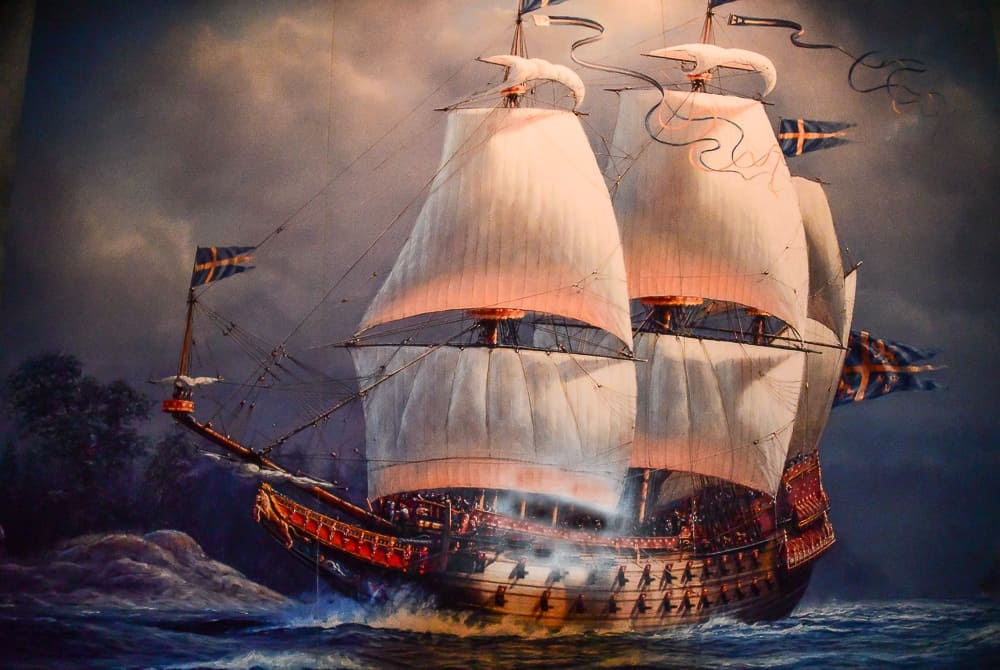
King Gustav wanted the Vasa to be a big and powerful ship, so he ordered bronze cannons that were specifically cast for her. The war vessel was to become a symbol of Sweden’s naval supremacy, meant to strike fear in the hearts of its enemies.
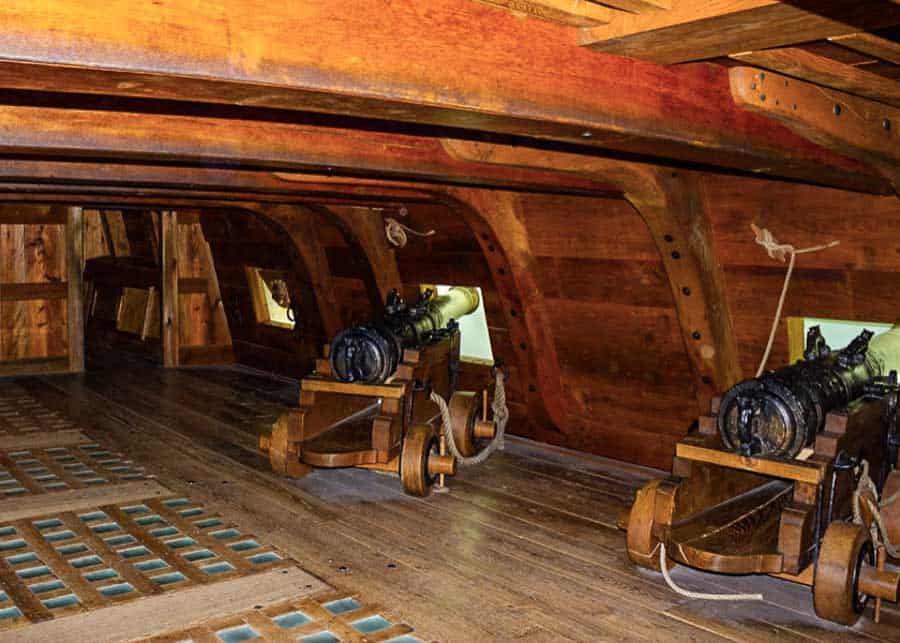
The Tragic Story of Vasa Ship
Unfortunately, the Vasa didn’t accomplish any of those big achievements. Instead, she became a symbol of engineering failure and will always be remembered as the ship that never sailed. But what went wrong?
A Faulty Design
Construction of the Vasa began in early 1626 at the navy yard in Stockholm. The King spared no expense. He hired Henrik Hybertsson, an experienced Dutch shipbuilder who had already worked for his predecessor, but who had never built a ship with two gun decks before.
Since at that time there were no plans or drawings used in the construction, a shipbuilder would just use proportions, general criteria and his own experience in the process.
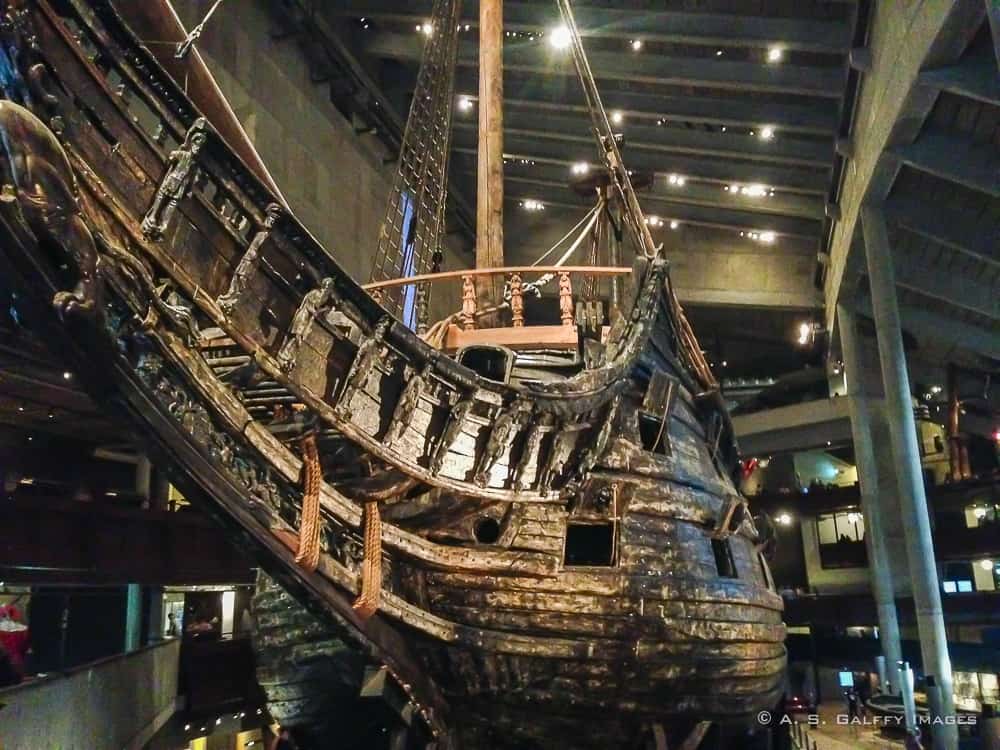
When the construction was finished, the Vasa looked magnificent. She was adorned with hundreds of painted and gilded wooden sculptures. Her hight was 69 meters and her width was 12 meters.
The ship displayed ten sails that would make for 1275 square meters. She was the most powerfully armed warship in the world, with 64 bronze cannons.
The gun decks were supported by half 50 cm thick beams that added to the weight above the water line, but no one was aware of any problems with the ship’s stability at that point.

A Voyage That Should Have Been Postponed
The first signs of Vasa’s bad stability showed up when Captain Hansson noticed that thirty men running to and fro on the upper deck made the ship sway so badly that she almost capsized in the harbor.
The Captain pointed that out to Admiral Fleming who the King’s liaison, but neither of the two acted upon their suspicions. They both knew King Gustav Adolf was in a rush to get the ship ready to sail.

The Swedish fleet had lost several ships to a storm in the autumn 1625. The pressure was high and no one dared to postpone Vasa’s maiden voyage any further.
Vasa Is Doomed to Perish
It was a sunny afternoon with little wind on August 10, 1628. Several hundred spectators filled the beaches around Stockholm to see the Vasa ship spread its sails.
The ship was ready: ballast, cannons and ammunition stored and a crew of 150 people on board. The crew had been allowed to bring their families, as it was the ship’s maiden voyage.
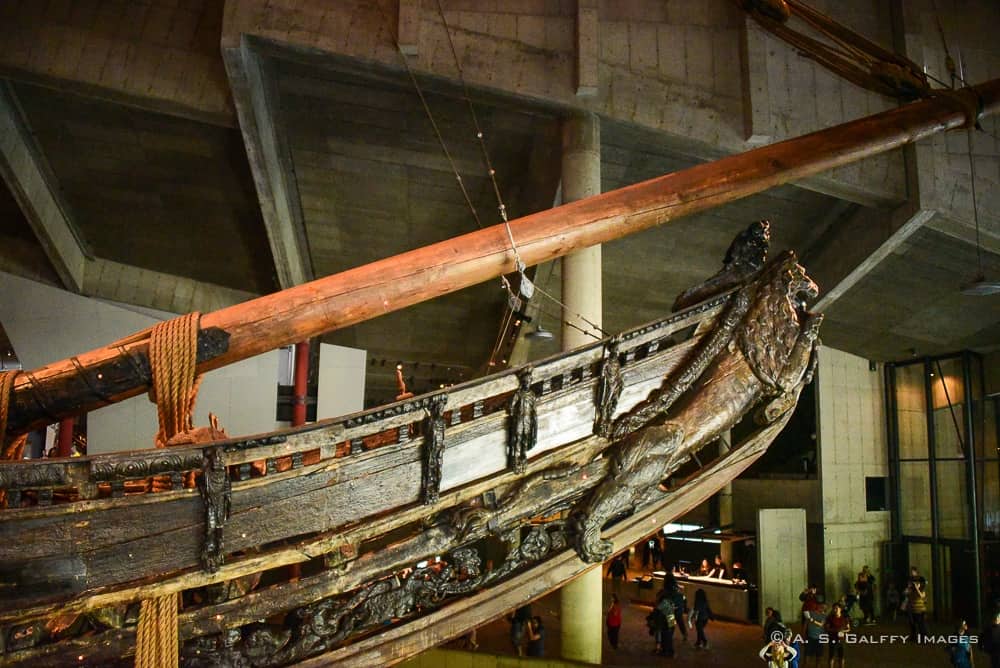
The guests, including women and children, would disembark at the fortress of Vaxholm. Then, the Vasa ship would continue to the summer fleet base where three hundred soldiers were supposed to join.
Twenty minutes into her journey, just after passing the Södermalm Cliffs, the ship was hit by a strong wind. It heeled to port and water started gushing in.
A second gust made her heel again and now the water began pouring in through the gun portals. The Vasa ship began to sink after having sailed only 1300 metres. Within minutes, the ship was on the sea bed at a depth of 32 metres.
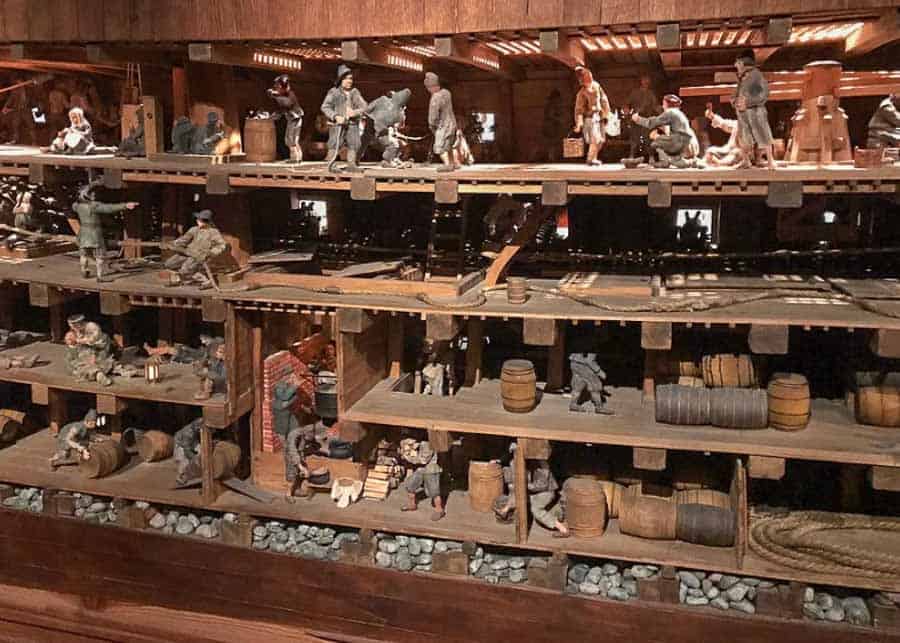
Most of the crew and guests managed to save themselves by swimming or clinging to the rigging that was still over the waterline. But 30 unlucky ones were trapped inside the ship and died; 16 of their skeletons would be found more than 300 years later.
Recovering the Vasa Ship
30 years after the Vasa ship sank, Hans Albrecht von Treileben went to Stockholm and presented his knowledge of using a diving bell. A few years later he obtained the right to salvage the cannons.
Between 1664-1665 all the cannons from Vasa have been hauled up using a diving bell. After that, the ship became forgotten with no trace of her position. The Vasa laid in the shallow waters of Stockholm harbor for more than 300 years.
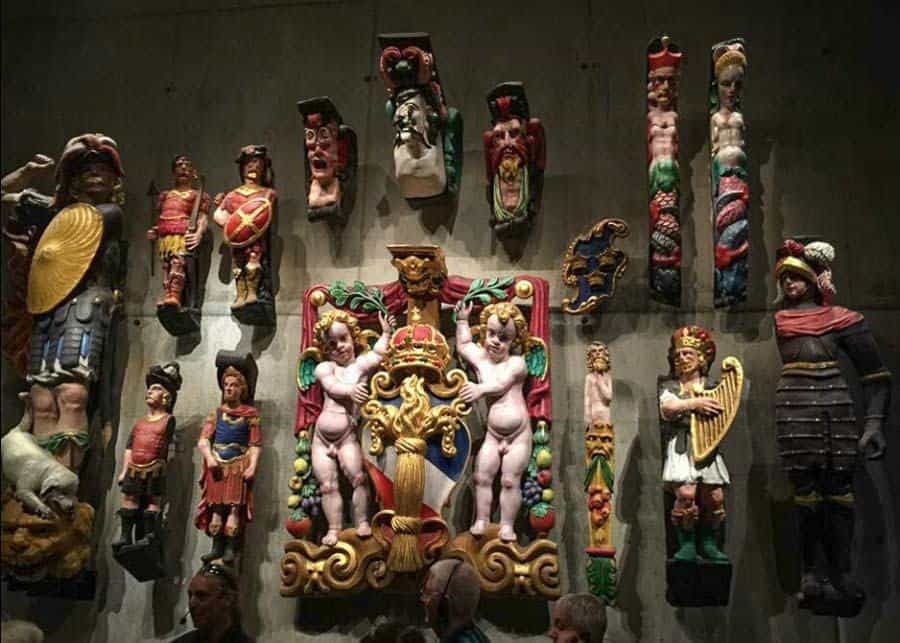
In 1956 the ship was finally located by Anders Franzen and a committee for salvaging the ship was formed. At first all the objects from the boat have been brought up and numbered, catalogued and washed.
Then began the tedious work of drilling tunnels beneath the keel of the boat. It took almost a year to complete the six tunnels that were later used to insert strong cables intended to raise her up to the surface.
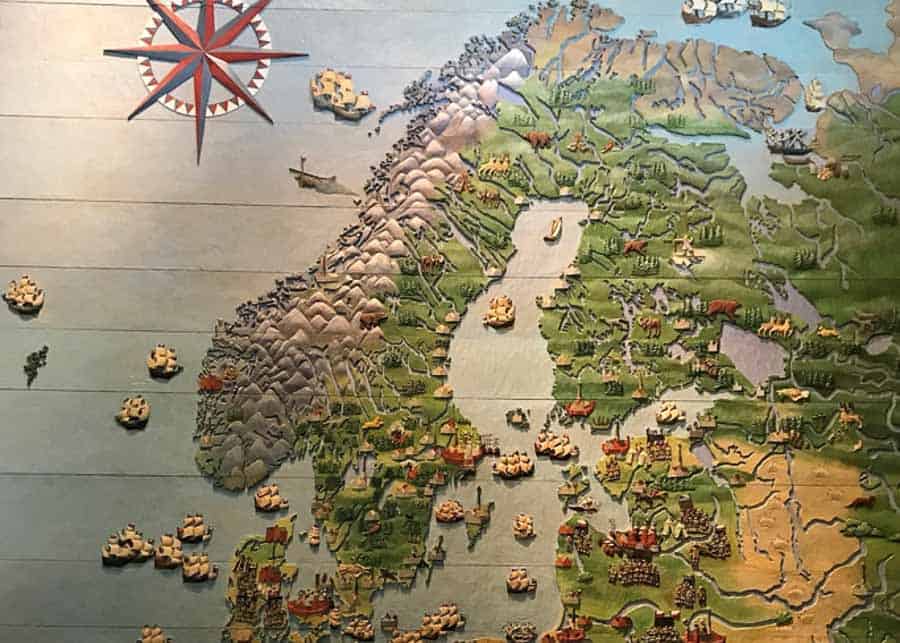
In 1961, 333 years after it sank, the Vasa was raised to the surface. The ship was so well preserved that it could float after the gun portals were sealed and water and mud were pumped from it.
There were several factors that contributed to the good condition in which the ship was found: the low salinity of the Baltic Sea, the lack of oxygen in the water and the low water temperature (between +1 and +5ºC).
The Vasa Ship Museum
The conservation process was long and tedious. After being removed from the harbor’s cold waters the ship began to dry. If it dried too quickly the hull could shrink, crack and the wood could collapse.
For 17 years the Vasa ship sat in a dark warehouse where it was sprayed almost continuously with a solution of polyethylene glycol, which gradually soaked into the hull, displacing the sea water.
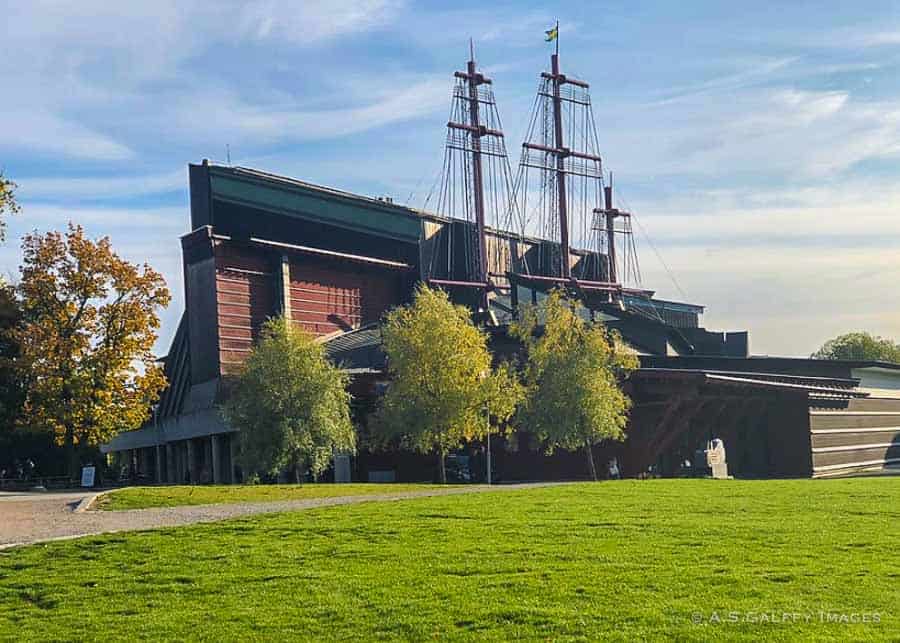
After the water was displaced from the ship, the Vasa began to gradually dry over a period of nine years. By the late 1980’s the ship was stable enough to be moved to a place where she could be displayed permanently.
In 1988 the Vasa was towed into a dock and the new Vasa Ship Museum was built around it. The museum opened its gates to the public in 1990. Visiting it is one of the unusual experiences in Stockholm.

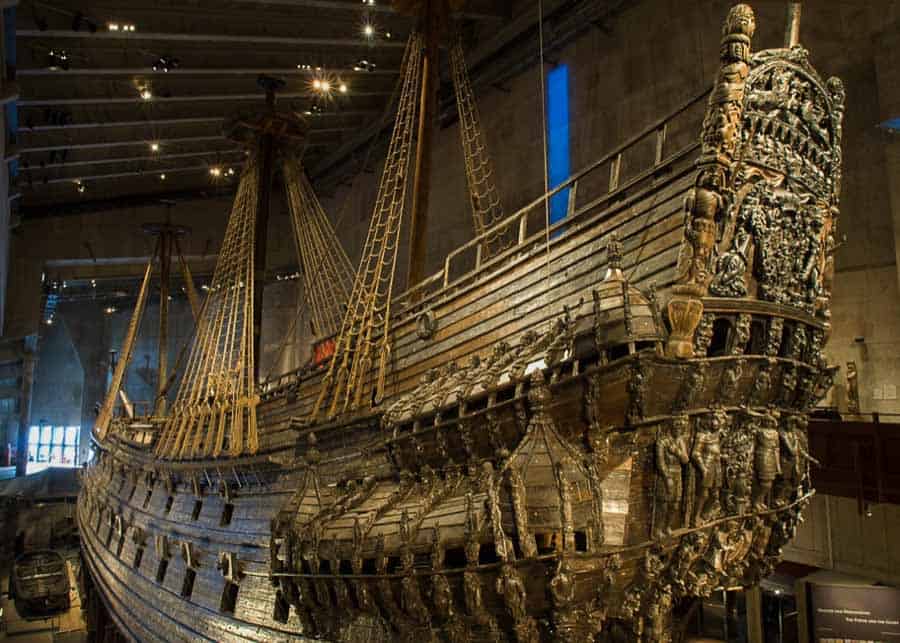




Medha Verma
What an interesting yet tragic story of a war ship that was built with so much passion and money but turned out to be a engineering failure! It’s a pity that the ship sank on its maiden voyage itself, and intriguing to read that it was salvaged after 300 years of lying at the bottom of the sea. Must be fascinating to see it displayed at the museum in all its glory. Well, whatever’s left of it anyway!
Claudia
This post brings me back. I visited the Vasa Museum 25+ years ago, and was impressed by the ship and its story. A bit of bad luck and poor ship building ensured that we can see it to this day. It’s ironic that preserved it while the ones who were seaworthy are long gone.
Anda Galffy
Yes, indeed!
Vaisakhi Mishra
I had first heard of the Vasa Museum some 4-5 years back from a friend of mine who told me how well preserved this gigantic ship was (for its time) even after being underwater for hundreds of year. I could not imagine it being in good condition. But your photos and your explanation for its condition totally convinced me. Loved your narration too!
Nisha
The first thing that Vasa ship reminded me was of Titanic. Probably the details of the ship and that it couldn’t complete any journey and so many people died when the ship sank on its first journey.
Such detailed history about the Vasa ship gives us more insights of hows and whys. We haven’t been to Sweden till now so I’m marking it to my to do list. So sad that people died when the ship sank.
Christina
This is such an interesting bit of information about Swedish history. I didn’t even realise Sweden was into shipbuilding! The Vasa ship certainly looks impressive.
Linda (LD Holland)
Such a detailed history about the Vasa ship. We missed seeing this when we visited Stockholm. Now I wished that we had. Great to preserve this piece of history. So sad that people died when the ship sank. And that this mighty ship never even completed one full sailing. But hopefully the lessons learned from this ship helped others to not lose their lives.
Fairuz
This is an interesting piece of Swedish history. What would be the most powerfully armed warship in the world with 64 bronze cannons, it turned out to be a dud. I can’t even begin to imagine what it would be like for those who witness the ship sinking and for those crew who were on it. It’s sad to hear about the 30 people who perished. It may have taken over 333 years for the ship to be resurfaced, but it was worth the time and effort given its story and how well preserved it is.
sherianne
This is such a great museum; the conservation must have been a ton of work. The sculptures on the ship are amazing. It’s sad and shocking how quickly the ship sank
Carol Colborn
Yes, it was one of the highlights of our visit to Stockholm. It’s history alive! I didn’t know it took 26 years of drying and preparation before it could be prepared for the Museum.
Ursula @ myVideoMedia
The Vasa Museum is my favorite museum in Stockholm. When I entered it last year I was speechless. I have seen already some oldtimer ships in England, but the Vasa is the best preserved I have ever seen.
Anda Galffy
I agree, Ursula. Vasa is the most impressive museum in Stockholm.
Sally@Toddlers on Tour
What a sad yet interesting story.
A little like the Titanic in that mens’ egos became greater than ensuring the safety of those on board.
Anda Galffy
It reminded me of the Titanic also, Sally.
Emily @ Out and About
I’ve never heard of the Vasa Museum but I love learning about naval history in general! The story of the ship is fascinating and I love the details you captured in all of your photos. Amazing history!!! It’s funny how much shipbuilding architecture has advanced over the years, yes?
Ahila
I have visited the Vasa museum several times and enjoyed exploring it each time. Lovely and comprehensive post on the history of the Vasa!
Anda Galffy
Thank you, Ahila. If I ever go back to Stockholm I’m going to visit the Vasa Museum again for sure. This time I’ll bring a tripod with me.
Rhonda Albom
Wow, a very interesting story. I guess the physics of shipbuilding and buoyancy were not well understood at the time.
annette charlton
What an interesting article Anda, I love details and your post is full of them together with stunning photos. How well preserved the wood is and your photos clearly show that. I must admit I had never heard of this restoration project. Imagine being a member of the Vasa Committee or the museum curator and patiently overseeing the project for 34 years (1956 – 1990)!!
Anda Galffy
Yea, quite impressive Annette, I agree.
Mary {The World Is A Book}
What an impressive ship! I love all the details. I have heard of this ship and museum and would love to visit someday soon. The history is amazing and the I can’t get over the details here. Thank you for all the history and information.
Ruth
I just read another post about the ship this week. Your photos gives me a different perspective of the vessel. Have to say the carvings are very impressive (as the ship itself). The story is interesting. Didn’t know the crew’s family was in the ship when is sank. What a failure! It reminds me of projects, I have been involved in, that are doom to fail since the beginning but nobody has the courage to talk because of the pressure. #TheWeeklyPostcard
Anda Galffy
You are so right. Unfortunately this is true even today, Ruth.
Lolo
I just read a similiar post earlier this week and definitely want to check out the Vasa! The history of it is so interesting! #TheWeeklyPostcard
Anda Galffy
Since you are in Europe, you should definitely check it out, Lolo.
Jessica @ Independent Travel Cats
What an interesting story and some amazing carved wooden details on that ship. Reminds me a bit of fate of the Spruce Goose (flew only once) which also sits in a museum. Definitely a museum I’d like to see in Sweden!
Anda Galffy
Yea, you are right. Spruce Goose was displayed in Long Beach, California, for a very long time.
Sand In My Suitcase
We just visited the Vasa Museum in Stockholm too! It’s much more impressive and interesting than we thought it would be. It’s not just about looking at an old ship, as you point out. It goes into the recovery and preservation process. And the part we found fascinating – it covers the life of the seamen at the time (foods they ate, what their living quarters looked like, even the horrible diseases they caught and simple surgeries performed).
Anda Galffy
One of the most interesting museums in Stockholm, indeed.
Linda Bibb
I’ve known about the Vasa for ages but never actually read the details about its resurrection from the deep. I also hadn’t realized how the water conditions had contributed so much to its preservation, though I pity the poor divers who had to endure those freezing temperatures.
I was surprised when you said that they built a museum around the ship. I had always assumed it had been an exhibit in a larger museum. The carvings are exquisite! Are there photos or a video of the interior? How much time should someone plan to spend at the museum?
Anda Galffy
There are better photos of the Vasa on the Museum’s website, Linda. Unfortunately, they keep the lights very dim in the museum for preservation reasons. That was the best I could do. It doesn’t take that long to visit the Vasa Museum. I’d say at the most 45 minutes. It’s just one big room, as you can expect.
Heidi
This is absolutely my most favourite museum in the whole world! Every time I visit it I still am amazed by the Vasa 🙂
Anda Galffy
I was amazed by the Vasa too, Heidi. It’s hard to believe it was in the water for 330 years.
Suze - Luxury Columnist
What a stunning looking ship, it’s a shame that some of the crew on the maiden voyage lost their lives. Must have been fascinating to visit this
Anda Galffy
Many big ships sank on their maiden voyage, Suze. The Titanic is another one that comes to mind. And in both these cases it was human error that caused it.